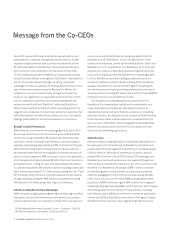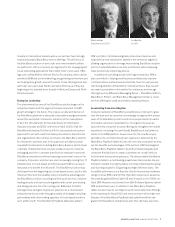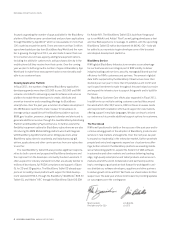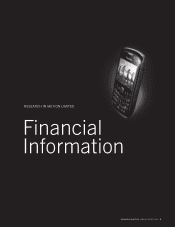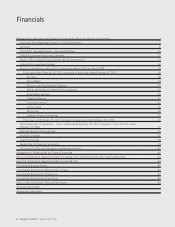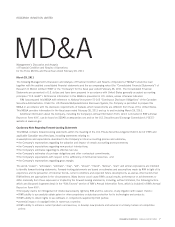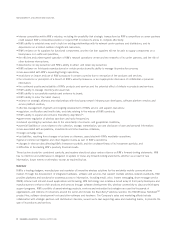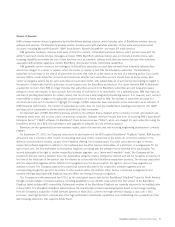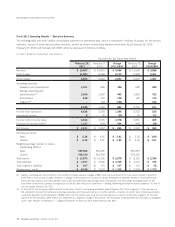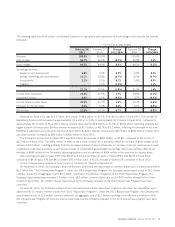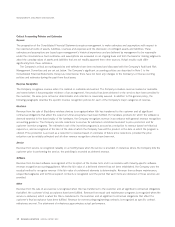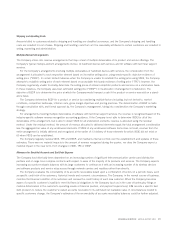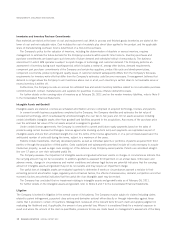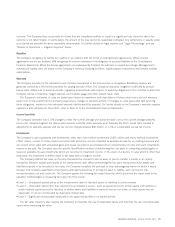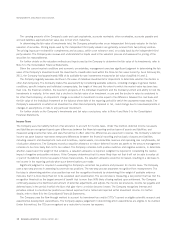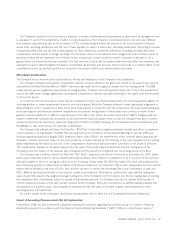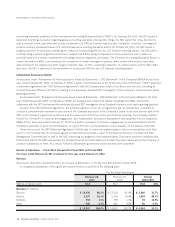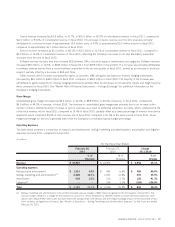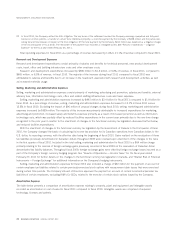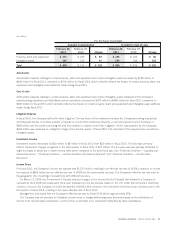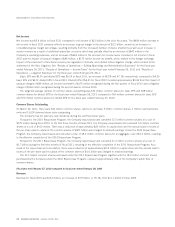Blackberry 2011 Annual Report Download - page 25
Download and view the complete annual report
Please find page 25 of the 2011 Blackberry annual report below. You can navigate through the pages in the report by either clicking on the pages listed below, or by using the keyword search tool below to find specific information within the annual report.Critical Accounting Policies and Estimates
General
The preparation of the Consolidated Financial Statements requires management to make estimates and assumptions with respect to
the reported amounts of assets, liabilities, revenues and expenses and the disclosure of contingent assets and liabilities. These
estimates and assumptions are based upon management’s historical experience and are believed by management to be reasonable
under the circumstances. Such estimates and assumptions are evaluated on an ongoing basis and form the basis for making judgments
about the carrying values of assets and liabilities that are not readily apparent from other sources. Actual results could differ
significantly from these estimates.
The Company’s critical accounting policies and estimates have been reviewed and discussed with the Company’s Audit and Risk
Management Committee and are set out below. The Company’s significant accounting policies are described in Note 1 to the
Consolidated Financial Statements. Except as noted below, there have not been any changes to the Company’s critical accounting
policies and estimates during the past three fiscal years.
Revenue Recognition
The Company recognizes revenue when it is realized or realizable and earned. The Company considers revenue realized or realizable
and earned when it has persuasive evidence of an arrangement, the product has been delivered or the services have been provided to
the customer, the sales price is fixed or determinable and collection is reasonably assured. In addition to this general policy, the
following paragraphs describe the specific revenue recognition policies for each of the Company’s major categories of revenue.
Hardware
Revenue from the sale of BlackBerry wireless devices is recognized when title has transferred to the customer and all significant
contractual obligations that affect the customer’s final acceptance have been fulfilled. For hardware products for which the software is
deemed essential to the functionality of the hardware, the Company recognizes revenue in accordance with general revenue recognition
accounting guidance. The Company records reductions to revenue for estimated commitments related to price protection and for
customer incentive programs. The estimated cost of the incentive programs is accrued as a reduction to revenue based on historical
experience, and is recognized at the later of the date at which the Company has sold the product or the date at which the program is
offered. Price protection is accrued as a reduction to revenue based on estimates of future price reductions, provided the price
reduction can be reliably estimated and all other revenue recognition criteria have been met.
Service
Revenue from service is recognized rateably on a monthly basis when the service is provided. In instances where the Company bills the
customer prior to performing the service, the prebilling is recorded as deferred revenue.
Software
Revenue from licensed software is recognized at the inception of the license term and in accordance with industry-specific software
revenue recognition accounting guidance. When the fair value of a delivered element has not been established, the Company uses the
residual method to recognize revenue if the fair value of undelivered elements is determinable. Revenue from software maintenance,
unspecified upgrades and technical support contracts is recognized over the period that such items are delivered or those services are
provided.
Other
Revenue from the sale of accessories is recognized when title has transferred to the customer and all significant contractual obligations
that affect the customer’s final acceptance have been fulfilled. Revenue from repair and maintenance programs is recognized when the
service is delivered, which is when the title is transferred to the customer and all significant contractual obligations that affect the
customer’s final acceptance have been fulfilled. Revenue for non-recurring engineering contracts is recognized as specific contract
milestones are met. The attainment of milestones approximates actual performance.
12 RESEARCH IN MOTION ANNUAL REPORT 2011
MANAGEMENT’S DISCUSSION AND ANALYSIS


